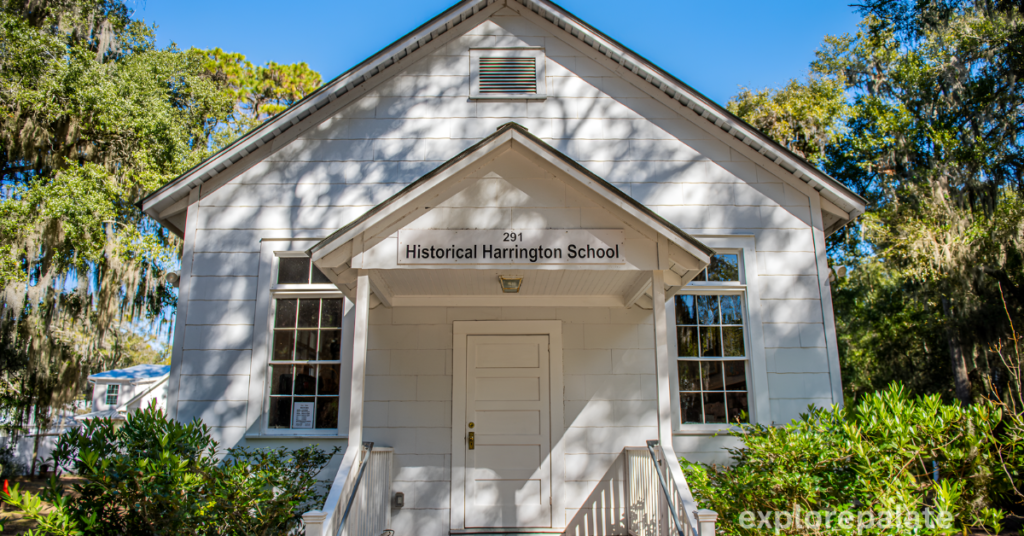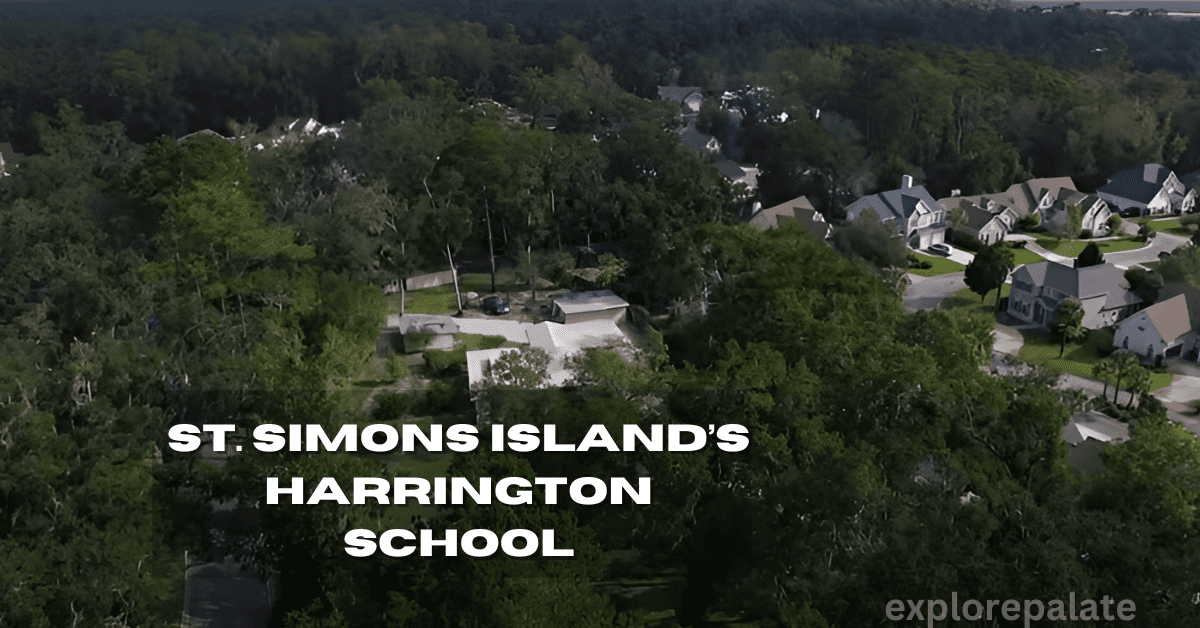Nestled in the serenity of St. Simons Island, the Harrington School radiates with stories of its past, serving as an African American school and a beacon of Gullah-Geechee heritage. This storied one-room schoolhouse, once known as Harrington Graded School, served grades 1-7 during the vibrant 1920s, before navigating the twists and turns of desegregation in the turbulent 1960s. Transforming from a daycare to an abandoned relic, it stands today as one of the most valuable representations of Black communities’ commitment to education.
It was a place to learn, but also a gathering place for community events like potluck dinners, Halloween apple-bobbing parties, movie nights, Christmas gift exchanges, and Easter egg hunts. The school not only conserved bedrock American culture but also fostered unique language, Christian worship practices, and artistic expressions specific to the island’s heritage. Recognized by the Georgia Trust for Historic Preservation as one of the Places in Peril, its significant, historic, and archaeological facets faced risk from deterioration or demolition.
The community tied in public policy, development, and activism through groups like Friends of Harrington and African-American Heritage Coalition, mirroring the diverse races dedicated to preserving this essential piece of history. Their collective efforts have seen the schoolhouse restored and reopened as the Historical Harrington School Cultural Center to educate and inform visitors, thereby upholding a legacy.
Some Historical Points

The Harrington Community has roots deep in emancipation, where former slaves from the plantations of the Couper’s and Goulds first settled, thanks to land from the Demere family. Census data shows from 1900, 1910, and 1920 a growing African American community of sawmill workers and carpenters. Children thrived in school, learning more than just to read and write; they were imprinted with a rich cultural heritage.
From documented accounts, we know the role of St. Simons Island in shaping the culture where Harrington School served as a focal point for community, sharing, and preserving language and traditions. It is indeed a vital symbol, not just as a historical entity but as a living testament to the enduring spirit and gathering place that continues to inform, educate, and uphold the community’s esteemed heritage.
Conclusion
The Harrington School on St. Simons Island stands as a poignant symbol of resilience and community an irreplaceable testament to the African American educational heritage and Gullah-Geechee culture. From its inception as a beacon of learning and local congregation point in the 1920s to its desegregation and subsequent decline, the school has traced the arc of poignant historical narratives.
Notably, its preservation echoes the unity and determination of a community fervent in safeguarding its socio-cultural tapestry. Today, as the Historical Harrington School Cultural Center, it continues to celebrate and impart the rich heritage of the Harrington community, offering an immersive, educational journey into the history and heart of St. Simons Island. Thus, the Harrington School is not merely a relic of the past but a vibrant vessel carrying the legacy of education, culture, and community into the future.
You Might Also Like
FAQs
How old is St Simons Island?
The smaller islands, like Little St. Simons Island, were formed from the larger islands and are believed to be about 5,000 – 7,000 years old. 2500 B.C. Guale and Mocama Indians made their way to the coast, fishing, hunting, and gathering oysters to survive in the area.
Is St Simons Island privately owned?
The island has been privately owned since 1760 and was the Berolzheimer family’s private retreat from 1908 until the late 1970s when they opened the Lodge on Little St. Simons. Today, the island remains accessible only by boat, and anyone wishing to visit the island must make arrangements through the lodge office.
Why is it called St Simons Island?
Simons derives from anglicizing the Spanish name of a 17th-century settlement on the largest of Georgia’s Golden Isles. The island’s name, however, has not stayed the same throughout history, with the final version officially being designated as late as 1943.
Why live on St Simons Island?
In addition to the beautiful beaches and water views, the island also offers championship golf, plenty of shopping and dining, and a variety of housing options, from condos to oceanfront estates. St. Simons has a range of housing options, as well as a variety of neighborhoods and developments from which to choose.
What are some interesting facts about St Simon?
He supposedly preached the Gospel in Egypt and then joined the apostle St. Judas (Thaddaeus) in Persia, where, according to the apocryphal Acts of Simon and Judas, he was martyred by being cut in half with a saw, one of his chief iconographic symbols (another being a book).




